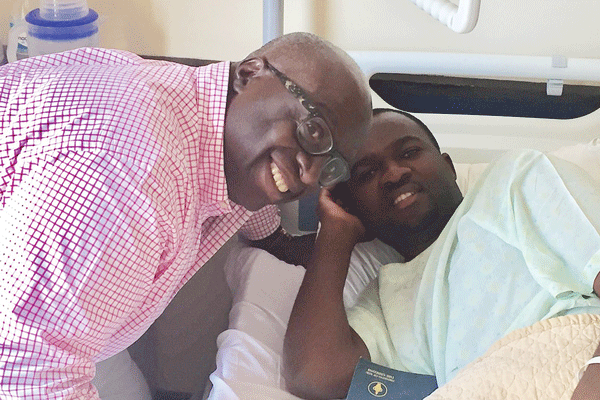
It’s the plush Harare clinic where Zimbabwe’s mamas-with-medical-insurance go to have their babies.
M&G Africa

It’s also where beaten-up political activists often end up for treatment.
Patson Dzamara, brother to the missing activist Itai, was at the Avenues Clinic last week after he was attacked by alleged agents of President Robert Mugabe’s government.
United States ambassador, Harry Thomas posted a pic of his bedside visit to Patson.
In a tweet likely not to please the Zimbabwe authorities, the ambassador said: “Checked on Patson Dzamara. He was reading the New Testament and in good sprits while describing his abduction y beating.”
But Dzamara is only one in a long list of activists who’ve received treatment at the Avenues Clinic, which is much less glitzy than Johannesburg and Pretoria medi-clinics.
Set up in 1983, it’s not the only Harare hospital that provides emergency treatment to activists (and ruling party officials, of course, though normally in other circumstances).
- Chamisa under fire over US$120K donation
- Mavhunga puts DeMbare into Chibuku quarterfinals
- Pension funds bet on Cabora Bassa oilfields
- Councils defy govt fire tender directive
Keep Reading
But there are times when — scarily — the police have actually come into the hospital to find opponents of the government.
A Google search with the terms “activist Avenues Clinic Harare” will turn up a wealth of results. A number of incidents stand out.
Armed police ‘guards’
In 2007, a bloodied MDC-T leader, Morgan Tsvangirai was taken to the hospital along with 63 other protesters attacked at a prayer rally ahead of the 2008 elections (Tsvangirai went on to win the first round of those polls, but had to pull out of the second round due to a sustained campaign of violence against his supporters in the rural areas).
Doctor Douglas Gwatidzo told the Washington Post back then that each patient was guarded by two armed police officers.
“They were very aggressive and threatening,” he was quoted as saying.
Ironically, Mugabe was seen at the clinic that same month, visiting his sister Sabina, who at the time was ill. In April 2007, nine members of Tsvangirai’s MDC party were forcibly removed from the clinic.
Bandaged patients threatened
Ruling party militias attacked anyone on the streets of Harare during the MDC’s “mass action” in June 2003 — even dragging a man out of the capital’s exclusive Meikles Hotel.
Activists were taken to the Avenues for treatment.
Reporters remember sneaking in through the street entrance of the pharmacy to see the injured. But the police came too.
The Crisis in Zimbabwe Coalition said in a statement that the police “created a panic … Victims of violence were easily identified by their bandages, and these people in particular were threatened by the police”.
Anarchy in reception
Britain’s Daily Telegraph reported in 2001 that a mob of activists and war veterans loyal to Mugabe stormed the clinic demanding backpay for a group of workers sacked six years earlier.
Police did not respond to calls for help, the report said.
Increase in cases
The relative stability that the power-sharing government from 2009 to 2013 brought saw a marked drop in political violence cases.
Sadly, they’ve resurfaced this year, as opponents of Mugabe have got braver on the back of the #ThisFlag movement. The European Union, two weeks ago, slammed the growth of human rights violations in the country.
It’s not just MDC or #ThisFlag supporters who have received treatment at the Avenues: in September, seven activists from ex-vice-president Joice Mujuru’s Zimbabwe People First party came here for help after an attack by Zanu PF youths in Guruve.











